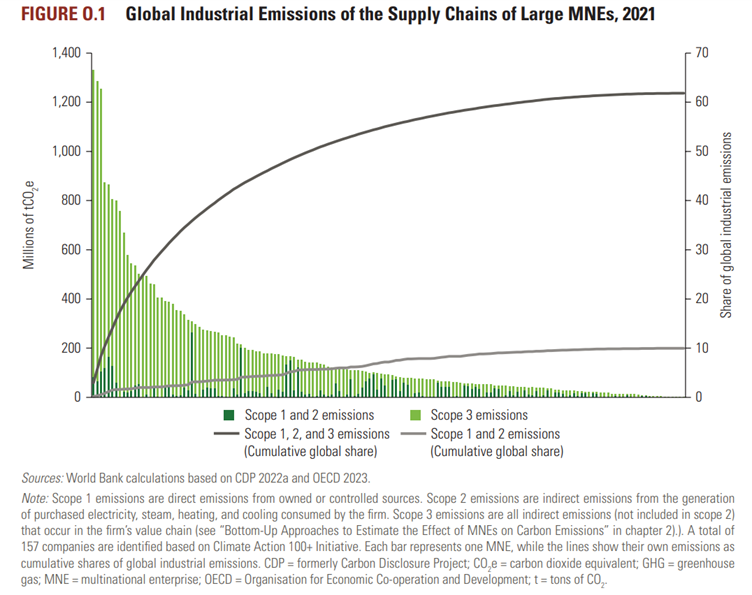Emissions Clustering and Heat and Drought Risk Significantly Increasing
In this issue:
60% of industrial emissions from 157 companies
60% of global industrial emissions can be attributed to only 157 multi-nationals. No real surprises there, but the worrying follow-on is that only 40% of those companies have, so far, committed to becoming net zero by 2050, only 20% have long term strategies to get there and only 5% have short-term reduction targets. While the headline emissions of these companies totals 10% of global industrial emissions, this new research from the World Bank estimates they have influence over 60% once their supply chains are included.

Clean energy manufacturing continues to build capacity
Manufacturing capacity for clean technologies is increasing substantially. Battery manufacturing leads the way with 72% year on year growth. Growth in solar manufacturing is up 39%, electrolysers 26% and heat pumps 13%. China dominates the growth, accounting for between 40% and 80% of new manufacturing capacity across the technologies.
22% of the world’s population to suffer dangerous levels of heat
The current level of government climate commitments is predicted to lead to a 2.7C increase (above pre-industrial levels) by 2100. According to a new study from Exeter University, that will see 22% of the world’s population, about 2bn people, suffering heat levels considered dangerous. Under a 3.6C scenario, that proportion would be up to 50%. If temperature increase is held to 1.5C, the number enduring dangerous heat falls to 5% of the population.

Flash droughts major risk to food chain - and set to increase
We could also be facing an increase in food crises as the incidence of flash droughts is expected to increase in every major agricultural region around the world by the end of the century. New research from scientists at the University of Oklahoma indicates the annual risk of a flash drought in the US and Europe is expected to increase from 32% to 53%. While the increased risk in other regions is not quite as stark, Africa, Asia, Australia and South America all show significant increases in risk.

